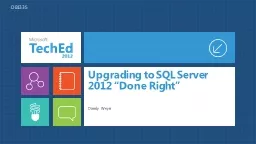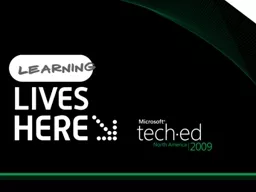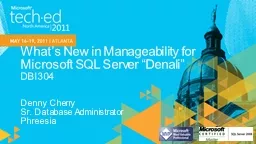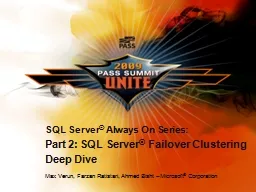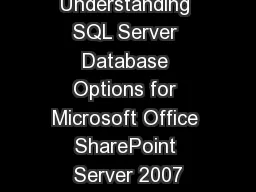PPT-Deploying Microsoft SQL Server 2014 with
Author : calandra-battersby | Published Date : 2017-04-09
Cluster Shared Volumes Subhasish Bhattacharya Program Manager Microsoft DCIMB364 Prerequisites Good grasp of Failover Clustering fundamentals Proficiency with SQL
Presentation Embed Code
Download Presentation
Download Presentation The PPT/PDF document "Deploying Microsoft SQL Server 2014 with" is the property of its rightful owner. Permission is granted to download and print the materials on this website for personal, non-commercial use only, and to display it on your personal computer provided you do not modify the materials and that you retain all copyright notices contained in the materials. By downloading content from our website, you accept the terms of this agreement.
Deploying Microsoft SQL Server 2014 with: Transcript
Download Rules Of Document
"Deploying Microsoft SQL Server 2014 with"The content belongs to its owner. You may download and print it for personal use, without modification, and keep all copyright notices. By downloading, you agree to these terms.
Related Documents



